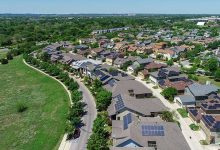The Australian Energy Market Commission says the emergence of distributed digital technologies means that the electricity market will have to think along the lines of digital marketplaces like Airbnb or eBay for energy.
The AEMC has released a new information paper examining how digitalisation is reshaping how the National Energy Market works, including by providing greater opportunities for a greater number of participants to act as both buyers and sellers.
It comes as the Energy Security Board seeks submissions on what the future energy market might look like as it weighs potential new market designs that it hopes can be introduced in 2025.
Just as Airbnb and Uber have facilitated the disruption of traditional industries by creating the opportunity for almost anyone to participate. Emerging technologies in the energy market are beginning to create similar opportunities, and the AEMC wants the energy market to prepare for a similar disruption.
“More sophisticated consumer participation like this takes the pressure off the grid and reduces the overall costs of the system. It also generates returns for families and businesses who are investing in smart appliances and distributed energy resources of all kinds,” AEMC chairman John Pierce said.
“It’s a point worth making very strongly. When individuals engage with the market they are not just helping themselves, prices can fall for everyone,” he said.
That approach may seem surprising from the AEMC, the market rule-maker which is often seen as a protector of incumbent technologies that is slow to respond to new technologies.
But it says it sees the strong growth in energy management and demand response technologies as potential disruptors in a future electricity system, allowing households and businesses greater control over how and when they purchase their energy.
This will also lead to a much more dynamic energy system that will allow devices and distributed energy resources to adapt to market conditions, and digital technologies will aid the real-time optimisation of the energy system.
“Appliances in our homes and businesses are increasingly automated. They are becoming smarter and giving us real opportunities to better manage demand to reduce system costs to save people money,” Pierce said.
“Consumers – or someone acting on their behalf – can set and forget devices such as batteries, pool pumps, air conditioners and electric vehicles to consume electricity at the cheapest times and export it back to the grid at times when it has the most value.”
Allowing coordination platforms to participate in the scheduling and dispatch of energy resources, multiple levels of optimisation within the grid, introducing locational pricing and appropriate incentives for reliability and security of supply are all potential issues that the AEMC considers need to be addressed to allow a ‘digital disruption’ to provide positive outcomes for consumers.
The AEMC’s more proactive approach follows ongoing criticism of its role, and its rules, including from Victorian energy minister Lily D’Ambrosio who said the AEMC has a “tin ear” to the need for energy reforms.
The renewable energy sector also recently rejected the AEMC’s proposed new price signal structures that were supposed to address challenges in the coordination of transmission network infrastructure, and the effective penalties faced by renewable energy projects due to the downrating of marginal loss factors.
When electricity markets were initially designed in the 1990s, the electricity system almost entirely served as a one-sided market. Large, inflexible and centralised generators served a market of consumers who had little by way of alternative supplies and little ability to coordinate their use with periods of high demand or high prices.
The rise of distributed energy systems, including rooftop solar and storage, along with smart demand management devices, have begun to fundamentally reshape consumers relationship with the energy market. Automation has also allowed distributed energy resources to be optimised without constant engagement by market participants.
Australia has already seen the emergence of virtual power plant coordinators like Reposit Power and GreenSync, and the AEMC sees this style of coordination, using data to optimise a responsive energy system, as potentially avoiding unnecessary investment in infrastructure and reducing overall costs for consumers.
“Then all you will need are price signals to automatically switch your household or business power plant from grid import to export and back again delivering the services you want at least cost. It would also be cheaper for streets and suburbs to share local generation resources and storage devices,” Pierce said.
The AEMC notes that, when aggregated, rooftop solar is the single largest source of generation capacity in the market, with a combined 8.1GW of distributed rooftop solar currently installed.
“Technology is driving broadscale decentralisation. More people are interested in do-it-yourself-generation and are motivated to explore energy efficiency,” Pierce added.
“The days of a relatively small number of centrally controlled, big generators dominating the market are going.”
While the AEMC is not seeking submissions to the information paper, it hopes the paper will spur market stakeholders to consider the impact of digitisation as they provide input into a post-2025 national energy market design process currently being undertaken by the Energy Security Board.
“Until now, we have been limited by technology, but digitalisation has progressed to the point where it is time to consider a completely new approach,” Pierce added.
“We are starting a new conversation to capture and extend the benefits of digitisation for all energy consumers into the future.”
The Energy Security Board will deliver its recommendations for a modernised, fit-for-purpose energy market to the COAG Energy Council who then may consider making appropriate design changes and governance reforms.










